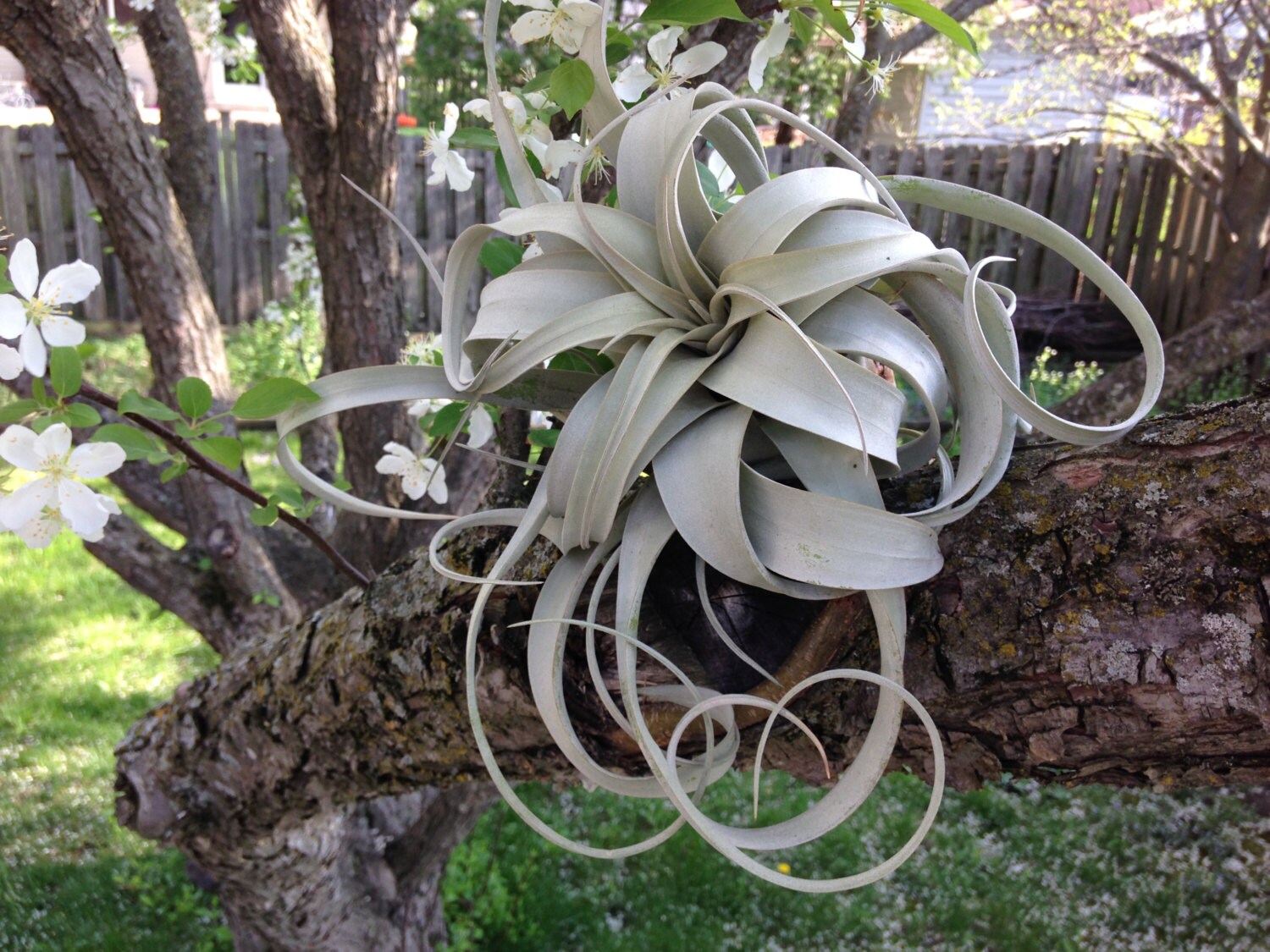

· By Airplantería Team
The King of Air Plants: Tillandsia xerographica
For our first species-spotlight, where we delve into the enchanting world of air plants, we will introduce the regal Tillandsia xerographica. This species, often hailed as the 'King of Air Plants', boasts a unique charm that captivates enthusiasts and novices alike. Join me as we explore the origins, care, and creative uses of this stunning air plant, ensuring your home or office is a conversation starter.
Origin and Habitat
Tillandsia xerographica hails from the semi-arid forests of Central America, flourishing in countries like Mexico, El Salvador, Guatemala, and Honduras. Its natural habitat is one of extreme conditions, where it clings to the branches of towering trees, basking in the full glory of the sun while withstanding periods of drought.
Physical Description
The Tillandsia xerographica is a testament to nature's artistry. Characterized by its wide, silver-green leaves that spiral elegantly in a rosette pattern, this air plant can grow impressively large, up to three feet in diameter. Its leaves are coated with a layer of specialized cells called trichomes, which serve as tiny sponges to absorb water and nutrients from the air. Once mature, it produces a stunning inflorescence, shooting up a tall spike adorned with vibrant red and purple flowers, adding a splash of color to its already striking appearance.
Care Requirements
Caring for a Tillandsia xerographica is straightforward, making it a delightful addition to any indoor garden:
- Light: Thrives in bright, indirect sunlight. A spot near a window where it can bask in the morning or late afternoon sun is ideal.
- Water: Despite its drought tolerance, regular misting and occasional soaking (every two to three weeks) are key to keeping it hydrated. Allow it to dry fully before returning it to its display spot.
- Air Circulation: Good air flow is essential for its health, mimicking the breezy environment of its native habitat.
- Temperature: Prefers warm conditions but can tolerate a range from 50-90°F (10-32°C).
Propagation
Propagating Tillandsia xerographica is a lesson in patience but rewarding. It produces offsets, or "pups," from the base of the plant after flowering. These can be gently separated when they're about one-third the size of the mother plant and cared for in the same manner.
Common Issues
Watch out for overwatering, which can lead to rot, and ensure it's not kept in too dim a location, as this can stunt its growth. A healthy Tillandsia xerographica will have stiff, silver-green leaves. If the leaves start to lose their rigidity or color, reassess its care environment.
Design Ideas
The architectural beauty of Tillandsia xerographica lends itself to various decor styles. Display it in a hanging glass terrarium for a minimalist look, or set it atop a stack of books for an eclectic touch. Its large size and distinctive shape make it a perfect standalone piece or a dramatic addition to a mixed air plant arrangement.
Interesting Facts
- The Tillandsia xerographica is often used in floral arrangements and wedding bouquets for its longevity and minimal care needs.
- It's a symbol of resilience and adaptability, thriving in conditions where few plants can.
Conservation Status
While not currently listed as endangered, Tillandsia xerographica faces threats from habitat destruction and illegal harvesting. Supporting responsible sellers who cultivate these plants sustainably is crucial for their preservation.
Conclusion
The Tillandsia xerographica, with its elegant form and easy care, is a crown jewel among air plants. Whether you're a seasoned collector or a curious newcomer, incorporating a xerographica into your space is sure to add a touch of majesty.
Join the Conversation
Have you had success with Tillandsia xerographica in your home? Share your tips, photos, and stories in the comments below!

